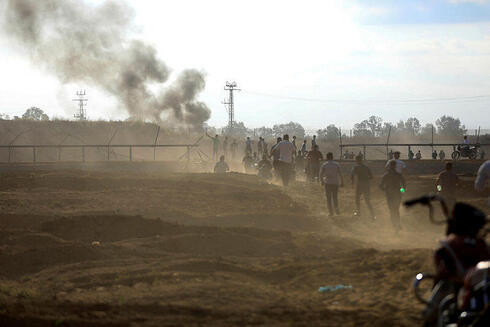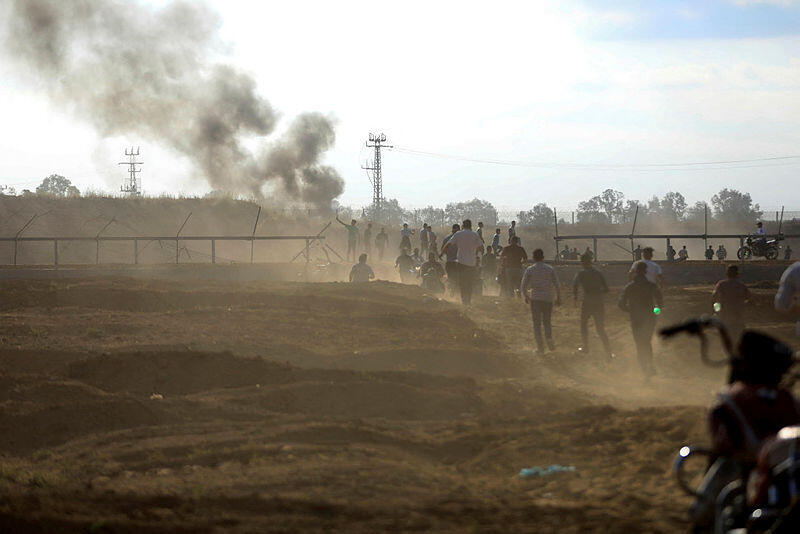
ISRAEL AT WAR
Technology enabled Israel to contain Gaza, but the line of defense collapsed
The advanced and massive protection system that Israel had established in the Gaza Strip, with a multi-billion-shekel investment, enabled it to maintain a long-standing "no policy" approach toward Gaza. However, on Saturday morning, Israel was confronted with the nightmare scenario of the collapse of its southern defense
The simplicity of the symmetry linking the 1973 tragedy to that of 2023 is striking. Exactly fifty years and one day after the Egyptian army breached the Bar-Lev fortifications along the Suez Canal, Hamas demonstrated to Israel that history can repeat itself, shattering the defensive line it had painstakingly built in front of Gaza over the years, involving an investment of billions of shekels.
Much like the Bar-Lev line, which crumbled during the Yom Kippur War, Israel's defense and fortifications in front of Gaza collapsed due to their unexpected vulnerability. This situation is even more dire than the events of fifty years ago. Then, battles occurred between Egyptian or Syrian soldiers and Israeli forces. Today, the conflict unfolds between civilians sheltering in their homes and determined armed terrorists bent on murdering innocents.
A scenario like the one that unfolded on Saturday, marked by a surprise war breaking through all of Israel's defense lines, unprecedented rocket attacks on the home front, a mass infiltration of terrorists into Israel, civilian and soldier casualties, abductions, hostage situations, and the occupation of settlements, was primarily associated with Hezbollah in the north within the security establishment. This was due to recognition of Hezbollah's capabilities and audacity to execute such actions.
In response to this threat, Israel had established significant barriers in the north over the past two decades. These barriers were designed to hinder Hezbollah's plans and its advance into Israeli territory, giving the Israel Defense Forces (IDF) ample time to organize and respond. The goal was to prevent the Shiite organization from gaining an infrastructure that could be utilized for invading Israel.
The possibility of a similar scenario with Hamas, perceived as a less formidable adversary compared to Hezbollah and Iran, was considered low. Consequently, the tactical preparations of the security forces in the field were not aligned with such a high-impact scenario.
The complete surprise and lack of preparedness for this situation resulted in the police and IDF struggling to gain control of the area for many hours after the initial attack. They faced difficulties in comprehending the scope of the attack. Many residents in the south, especially on the border with Gaza, were left to their own devices. Some sent desperate pleas for help from their hiding places within their homes, as terrorists were present and violence raged.
Concrete and steel fortifications
In recent months, Israel had been treating the threat of anti-tank missiles from Gaza as one of the most significant challenges to its settlements near the border. In response, Israel implemented its customary approach when faced with a threat: containment and protection. Concrete barriers were installed at vulnerable points to mitigate the risk of being hit by such missiles from Gaza.
For every significant threat originating in Gaza since Hamas took control in 2007, Israel responded with technological solutions. As rocket attacks increased, Israel developed the Iron Dome and David's Sling missile defense systems. Additionally, they are in advanced stages of creating a defense system against mortar shells and anti-tank missiles using lasers. In response to the threat of offensive tunnels dug by terrorist organizations, Israel built a massive underground defense wall, incorporating secret technology for detecting nearby excavations and revealing existing spaces, improving the IDF and Shin Bet's ability to detect intrusions. For scenarios involving terrorist squads approaching the perimeter fence, the IDF designated sterile areas and "kill zones," established extensive observation networks, and developed neutralization measures such as remote-controlled weapon systems.
Construction of these fortifications on the Gaza border lasted more than three years, concluding nearly two years ago. Approximately 3.5 billion shekels were invested in these defenses. They included security components that aimed to apply lessons learned from numerous clashes between the two sides of the border. The Ministry of Defense proudly announced that the amount of concrete used for this barrier could pave a road from Israel to Bulgaria. If all the steel used were melted down, it could reach as far as Australia.
This extensive and advanced protection system, incorporating several classified technologies, allowed Israel to maintain a "no-policy" approach toward Gaza, aside from periodic rounds of conflict and the hope for swift ceasefires. Throughout the past decade and a half of conflict, Israel increasingly relied on its technological advantages, celebrating the effectiveness of the Iron Dome, the capabilities of advanced drones, and the precision of its missiles. This allowed Israel to contain Gaza while deferring the resolution of the underlying issues.
On Saturday morning, Israel woke up from its prolonged complacency to the nightmare scenario of the collapse of its southern defense. Once again, a conception has crumbled, the south is in turmoil, and Israel faces new challenges.














